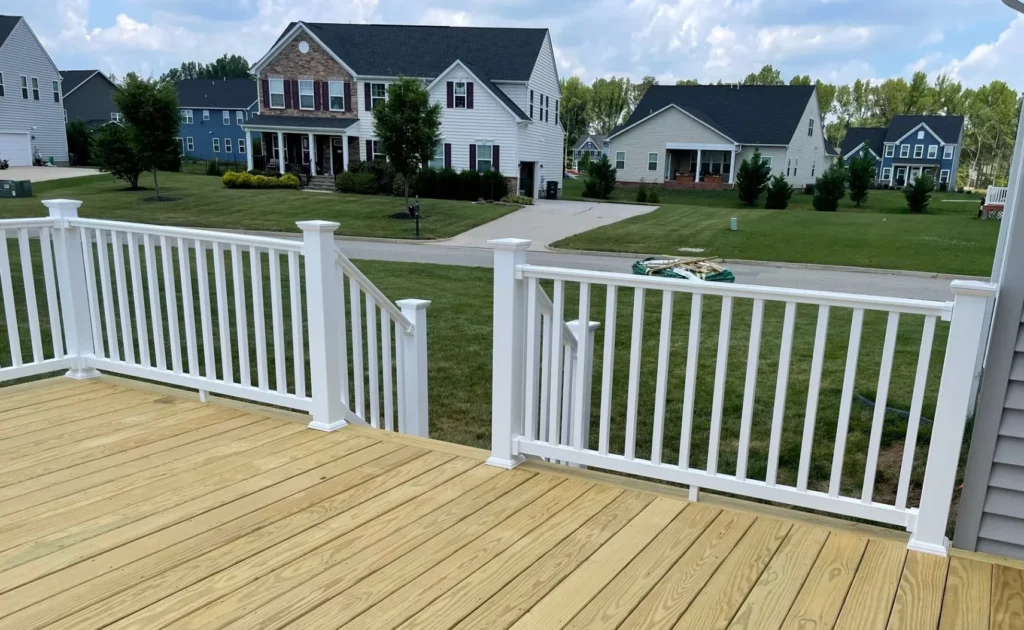
Railings are an essential safety feature in any building or home with stairs, balconies, or elevated platforms. However, railings can become worn, damaged, or outdated over time. If you are unsure when the right time is to replace your railings, this article will provide five signs that it’s time for a change.
Visible Damage
One of the simplest ways to tell if your railing needs replacement is if it has cracks or warps. The railings usage, temperature changes, water damage, and aging are some of the common causes of cracks and warping.
Persistent pressure from individuals that use the railing regularly or external forces like wind, rain, or sun can also cause visible deterioration or cracks in the railing.
Water can also seep into the joint where your deck and railing posts meet. Such moisture damage can lead to warped wood, which is particularly problematic. This moisture damage may also result in mold, which may speed up the railing’s deterioration.
Broken or missing railing parts can also jeopardize the entire structure, even though they may initially appear to be a minor problem. These broken portions can make the railings less secure to use. A replacement, rather than individual replacement of damaged components, may be more economical if several pieces break.
Corrosion
The presence of rust and corrosion signifies the deterioration of metal fasteners in the railing. Rust develops when metal gets exposed to moisture, which weakens the metal as it eats away at it. As a result, the structure will be unable to receive the support it needs from the railing.
Moreover, the screws and nails that hold the various components of the railing together may start to corrode or rust. Its corrosion may appear as a rusty substance or as a white, powdery substance. In either case, it is a sign that your railing’s metal hardware has begun to deteriorate.
Unsteadiness
Improper installation is the main cause of weak or shaky railings. Improper installation can cause the fasteners to loosen and come undone. Also, it can cause the wood to contract around them. An improperly erected railing may potentially sag as a result of constant use. A railing may also deteriorate with time through exposure to the environment, which can cause it to become unstable.
Rot
Wooden railings frequently develop rot, especially on decks and other outdoor structures. Due to its innate susceptibility to moisture, wood can eventually begin to rot when exposed to water. Water makes the wood brittle, weak, and discolored, which promotes rot. Mold may also start to appear on the railing, which is a sure symptom of rot.
Pest Infestation
Termites, carpenter ants, and several species of wasps are just a few of the pests that can cause serious damage to wooden railings. Due to their ability to tunnel into wood and hollow it out from the inside, these pests can seriously harm the integrity of wooden components. If you do not repair the damage, it may become severe and lead to a weak and unstable railing.
Look for indications of damage on the railing of your home if you believe there may be a bug issue there. Investigate the area around and beneath the railing for wood shavings and look for any holes in the materials.
Completely replace the railing if the issue is severe. Moreover, pay a professional exterminator to eliminate the pests if you have a pest problem. Not only can pests cause damage to the railing, but they can also spread to other parts of your home.
Contact us at 13TEN Renovations if you need to install a new railing. We mostly serve residents located in Richmond, VA – Henrico, Hanover, Powhatan, Goochland, and Chesterfield counties.